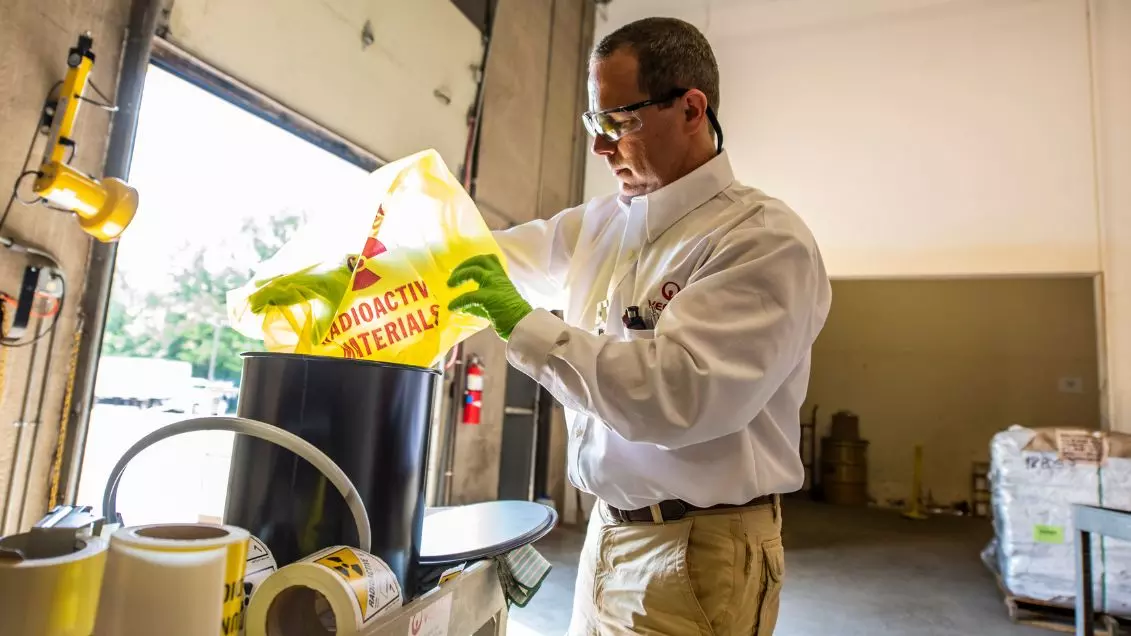The Challenge with Radioactive Waste
Disposing of radioactive waste can be a costly and time-consuming effort if not managed properly. In addition to logistical considerations, meeting compliance requirements of state and federal regulations can be a daunting task.
The first step toward bringing a program into compliance is identifying all types of radioactive waste. While some examples are obvious, such as contaminated rags and gloves, a full audit should be performed to verify and account for all streams.
Radioactive Waste Managed
We manage a wide variety of radioactive waste streams, including:
- Dry active waste
- Scintillation vials
- Mixed wastes
- Radioactive compounds
- Soils
- Sealed sources and gauges
- Lab packs
- Metals
- Resins
- Contaminated equipment
- Sludge and wet waste
- Solvents or corrosive materials
- Oil and gas wastes
- Biological waste
- TENORM
Simplify Your Radioactive Waste Management
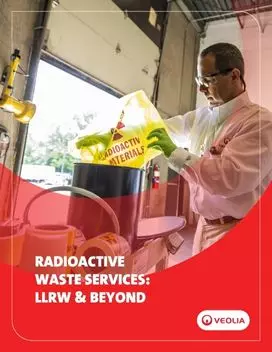
Ready to solve your waste challenges?
Our Solutions for Radioactive Waste
Low-Level Radioactive Waste Services
Waste Identification and Classification
Expert analysis and categorization of radioactive and mixed wastes.
Licensed Facility Access
Storage, decontamination and testing services at Veolia's fully licensed facility, Alaron Nuclear Services.
Packaging and Labeling
Proper containment, manifest preparation, and regulatory compliance for all shipments.
On-Site Collection and Management
Tracking, record-keeping, and safe transfer of waste from labs to storage rooms. Lab and room surveys in compliance with client license requirements.
Decontamination and Verification Surveys
Light decontamination work and verification surveys on-site, or specialized cleaning at Veolia's licensed facility.
Transportation Services
Transportation of radioactive and mixed wastes to processing facilities in compliance with DOT regulations.
Sealed Sources and Gauges
Packaging of sources for consolidation to reduce disposal costs.
Extensive Facility Network
Processing and disposal at Veolia's network of audited and approved facilities to manage long-term liability.
Alaron Nuclear Facility
A fully-integrated nuclear services facility located thirty miles north of Pittsburgh, PA that has been in operation for 4+ decades.
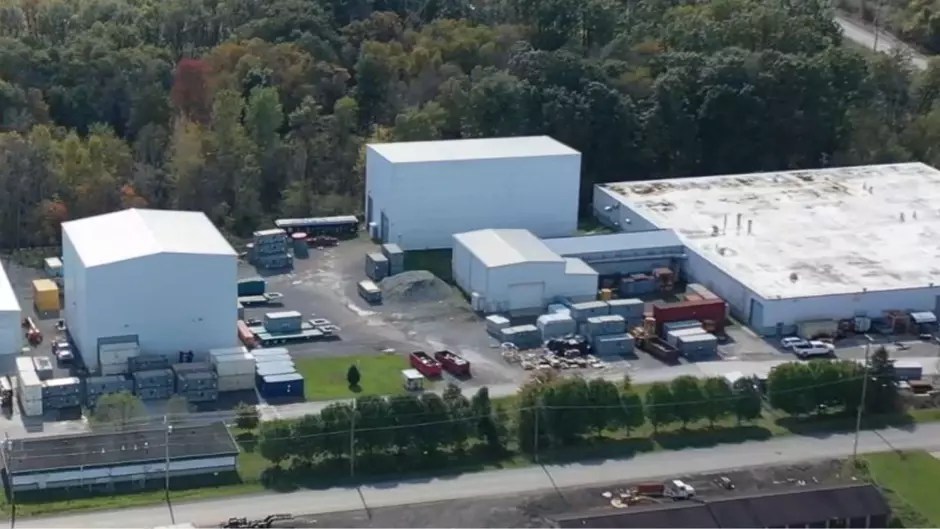
Alaron's 26 acres
- Nine separate processing buildings
- 150,000 ft2 of indoor work and contaminated equipment storage space.
- An integrated rail spur with a 24 railcar capacity
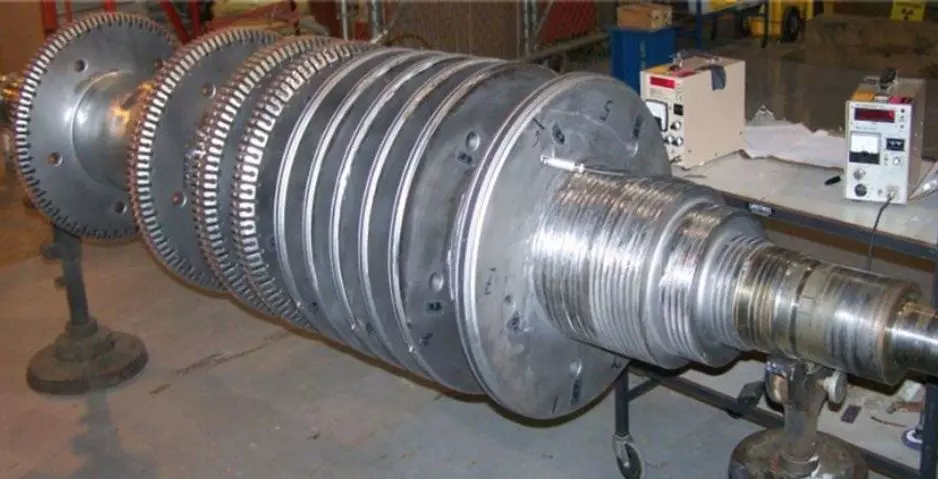
Decontamination for Asset Recovery
- Refurbishment for return service
- Release for unrestricted use
- Asset management and maintenance
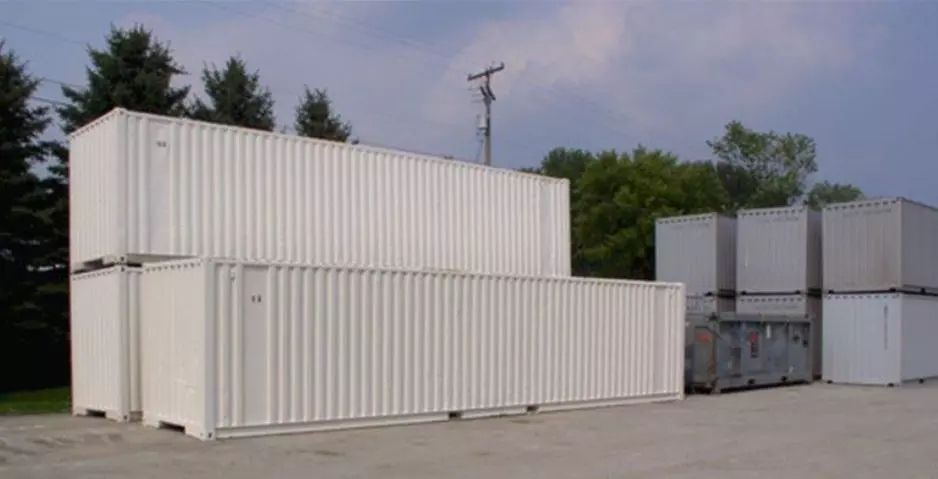
Facility Access
- Asset storage
- Increased workspace capability
- Increased schedule capacity
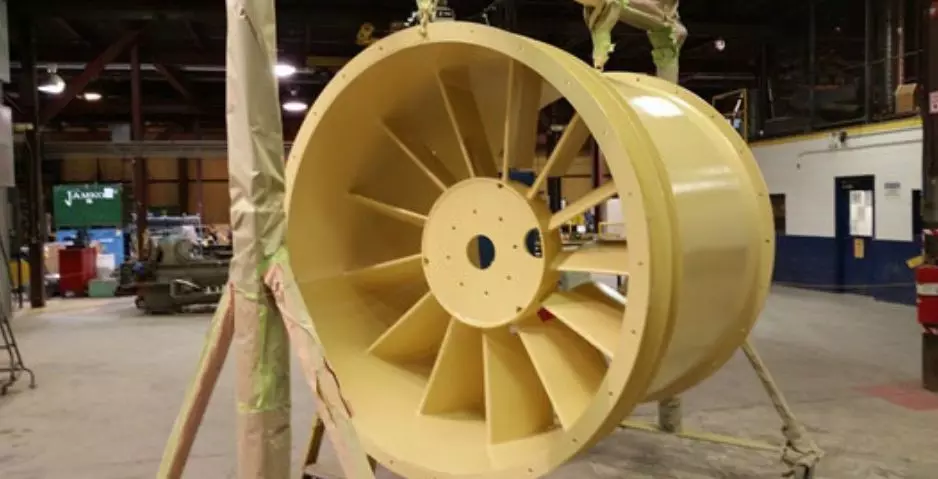
Specialty and Field Services
- Outage / on-site project support
- Transload (truck to rail)
- License transfer
- Safety-related coatings
Why Partner with Veolia
Veolia is a global leader in environmental services with operations in 57 countries. Our North American industrial group helps companies find sustainable solutions that prioritize waste reduction and reuse. Our teams have an unwavering commitment to compliance and safety, offering advanced treatment options to maximize resource recovery and minimize environmental impact. Our teams use real-time digital monitoring and data reporting, with nationwide coverage and an extensive network of partners.
End-to-End
Peace of Mind
When you partner with Veolia, you get 20+ years of proven experience providing full-service solutions from collection to disposal, with expert regulatory compliance and documentation.
Maximum Flexibility and Convenience
Benefit from Veolia's comprehensive waste acceptance, including on-site collection and management. Our teams have the ability to manage diverse waste streams utilizing a complement of audited and approved facilities.
Cost-Effective Solutions
Our programs are tailored to your needs, offering efficient processing and disposal including sealed source and gauge consolidation and disposal.
Trusted Service Partner
Veolia's Pennsylvania Department of Environmental Protection (PA DEP) licensed facility has been in operation for 4+ decades. Our safety records are industry-leading.


